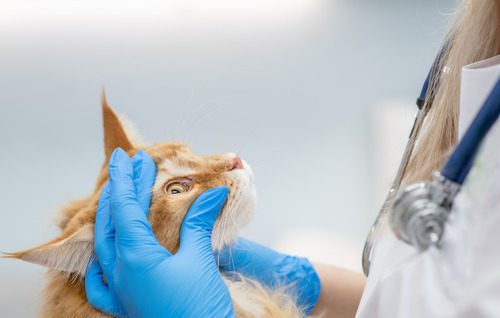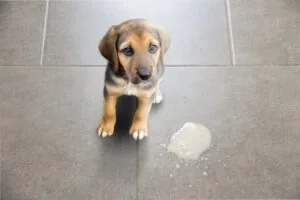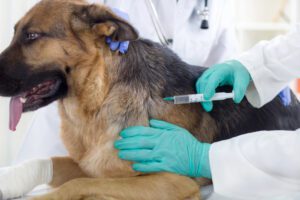Cat Eye Infection? Signs And Treatment
If your cat’s eyes look red, swollen, or are producing more discharge than usual, something may be wrong. Eye infections in cats can develop quickly and may be painful or irritating for your pet. While some cases are mild and clear up with proper veterinary attention, others may signal an underlying health issue. In this blog, we’ll explore the most common signs of a cat eye infection, what may be causing it, and what the treatment process typically looks like. If your cat is showing signs of eye discomfort, Shallowford Animal Hospital in Lewisville, NC can help. Call us at (336) 945-4412 or schedule an appointment online.

What Are Some Signs of a Cat Eye Infection?
Cats may not always show obvious signs of illness, but eye infections tend to be more visible. You’ll usually notice changes in how the eye looks or how your cat behaves. Recognizing these early signs can help you address the issue before it worsens.
Physical Symptoms to Watch For
One of the first signs of a cat eye infection is excessive tearing or unusual discharge. This discharge can range in color from clear to yellow, green, or even brown. Swelling around the eye, visible redness, or inflammation of the third eyelid are also common. You may also notice your cat squinting or blinking more often than usual. Some cats will paw at the affected eye or avoid bright light due to sensitivity.
Behavioral Changes
A cat with an eye infection may become more withdrawn or irritable. You might notice them hiding more often, resisting touch near the face, or avoiding interaction altogether. If your cat’s eating or grooming habits change suddenly, this may also be connected to their eye discomfort. These subtle behavioral shifts are important to note when describing symptoms to your veterinarian.
Causes of Cat Eye Infections
There are several possible causes behind a cat eye infection, and they can range from bacterial or viral infections to irritants in the environment.
Viral and Bacterial Infections
Feline herpesvirus (FHV-1) and calicivirus are two of the most common viral culprits behind cat eye infections. These viruses often lead to upper respiratory infections, which can spread to the eyes. Bacterial infections, such as those caused by Chlamydophila felis or Mycoplasma, may develop on their own or in conjunction with a virus. These types of infections tend to result in more pronounced discharge and inflammation.
Environmental Irritants and Allergens
Sometimes, what looks like an infection may actually be a reaction to dust, pollen, smoke, or household cleaners. These irritants can cause inflammation and lead to secondary infections if the eye’s natural defenses are compromised. Cats with seasonal allergies or sensitivity to certain products may experience recurring symptoms.
Foreign Objects or Injury
An accidental scratch or foreign material in the eye can cause irritation and lead to infection. This is more common in outdoor cats or multi-cat households where play can sometimes get rough. Even a small piece of debris trapped under the eyelid can quickly create a problem.
Diagnosing a Cat Eye Infection
When your cat shows signs of an eye infection, a veterinary visit at Shallowford Animal Hospital is the best next step. The eyes are sensitive and require careful examination to identify the source of the problem.
What to Expect During the Exam
At Shallowford Animal Hospital, we begin by reviewing your cat’s symptoms and medical history. A physical examination of the eye is performed using special instruments that allow your veterinarian to inspect the surface of the eye, eyelids, and surrounding tissues. In some cases, a fluorescein stain may be used to detect scratches or ulcers on the cornea.
Diagnostic Tests That May Be Used
Your veterinarian may take a sample of any discharge or perform swabs to test for viral or bacterial pathogens. In some cases, they may recommend additional diagnostic testing, such as blood work or imaging, if a more serious underlying condition is suspected. Prompt diagnosis helps guide the right treatment approach and prevents further complications.
How a Cat Eye Infection Is Treated
Once the cause of the cat eye infection is identified, your veterinarian can begin treatment. The goal is to relieve discomfort, stop the spread of infection, and address any underlying issues.
Medications for Infection
Bacterial infections are usually treated with antibiotic eye drops or ointments. These medications are applied directly to the affected eye, often multiple times a day. If a viral infection is involved, supportive care and antiviral medications may be used. Your vet may also prescribe anti-inflammatory medications to reduce swelling and discomfort.
Supporting Recovery at Home
While treatment should always be guided by your veterinarian, your cat may need a quiet, stress-free environment during recovery. Keeping their eyes clean and monitoring any changes in appearance or behavior are important during this period. Be sure to follow all dosing instructions and complete the full course of medication, even if symptoms seem to improve quickly.
Follow-Up Care
Follow-up appointments may be recommended to ensure the infection is clearing and the eye is healing properly. Your veterinarian may make adjustments to the treatment plan based on how your cat responds. Keeping up with these visits helps protect your cat’s long-term eye health.
When Should You Contact Your Veterinarian?
If your cat’s eye looks red, swollen, or is producing any type of discharge, it’s time to get it checked. Eye infections can worsen rapidly, and early treatment often leads to faster relief. Cats who are squinting, pawing at their face, or showing signs of discomfort should be evaluated promptly. Shallowford Animal Hospital is available to help.
Supporting Your Cat’s Ocular Health for the Long Term
While some eye infections are unavoidable, there are steps you can take to help your cat maintain good eye health year-round.
- Regular wellness exams at Shallowford Animal Hospital allow us to catch potential problems early, especially in cats prone to allergies, respiratory infections, or other health conditions. If your cat spends time outdoors or lives with other animals, routine checkups become even more important.
- Paying attention to subtle changes in your cat’s eyes, such as unusual discharge, squinting, or visible redness can go a long way in protecting their vision.
- Routine grooming and minimizing exposure to irritants like smoke or strong cleaning agents can also reduce the risk of eye irritation or secondary infection. If your cat has a known history of eye issues, keeping a close eye on flare-ups and acting quickly can prevent repeat problems.
If you’re concerned your cat may have an eye infection or you’re unsure what’s causing their symptoms, we’re here to help. Call (336) 945-4412 or schedule an appointment online with the team at Shallowford Animal Hospital in Lewisville, NC. We’re here to provide expert care for your cat’s eyes and everything else that matters to their health.
Share This Post
Recent Posts
About Shallowford Animal Hospital
Shallowford Animal Hospital and The Pet Spa at Shallowford are dedicated to the exceptional, compassionate care your pet deserves. Pets hold a very special place in our families, and we treat yours like our own.



